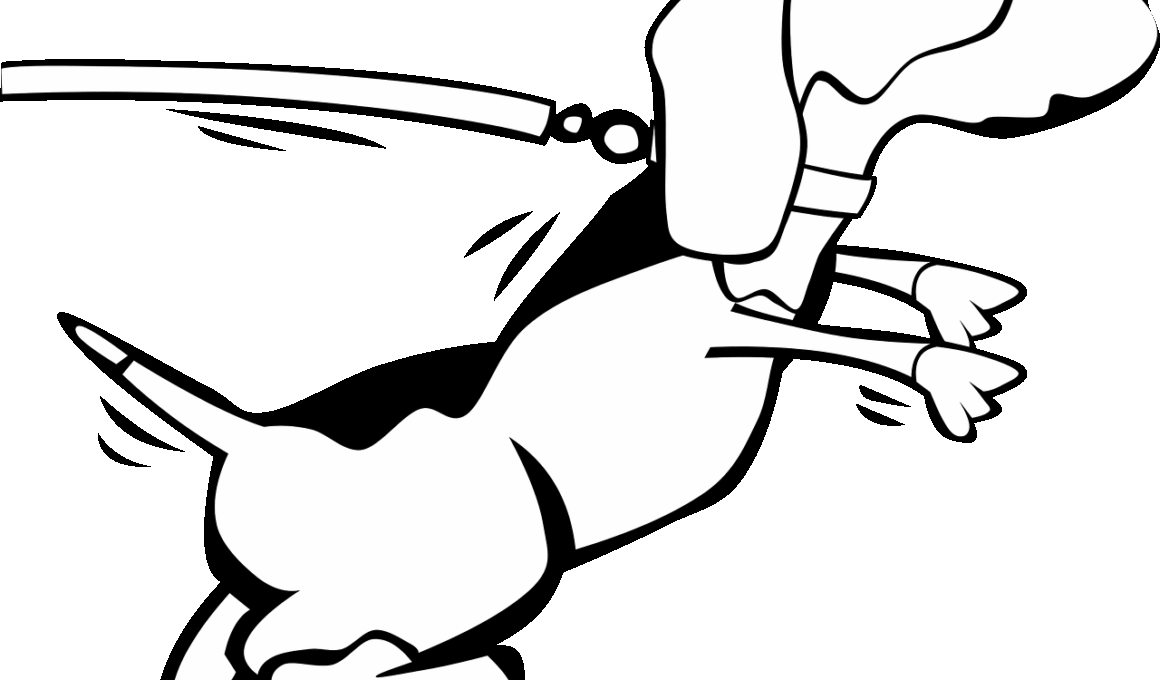Introduction to Advanced Leash Training
Advanced leash training is crucial for any dog owner who wants their pet to have complete control, especially when they are off-leash. The foundation of this is teaching your dog essential commands that ensure their safety and the safety of others. Commands such as “sit,” “stay,” and “come” are fundamental. These commands help establish a communication line between you and your canine companion. To successfully train your dog, you must utilize positive reinforcement techniques. Rewarding your dog with treats or praise upon following commands will significantly enhance their learning experience. Remember that patience is key; each dog learns at their own pace. Consistency in training commands is equally crucial; repeating commands frequently helps reinforce the lessons. Using a properly fitted leash and harness creates a comfortable environment for training sessions. Ensure that the leash is neither too tight nor too loose to avoid any distress for your dog. Off-leash control begins with solid leash control; the more your dog understands commands while on a leash, the more successful your off-leash sessions will be. Ensure you put in the time required for foundational training to build the skills necessary for advanced training.
Key Commands for Off-Leash Control
Several key commands form the backbone of advanced leash training. First, one must focus on the “come” command. Ensuring your dog responds reliably to this command is vital when off-leash. Establishing a strong, positive association with returning to you can be achieved through consistent practice and rewards. Second is the “leave it” command, which teaches your dog not to engage with distractions, potentially harmful objects, or other animals. This command can save lives and minimize unwanted behavior during walks. The “heel” command is equally important, allowing your dog to walk closely by your side. This not only improves control but also ensures you maintain your dog’s attention amidst distractions. The “stay” command is another critical component; this command keeps your dog in place, even when tempted by outside influences. Regular practice using varied distractions will solidify these commands. Create a structured training environment where your dog learns to obey consistently across different situations. Remember, practice makes perfect, and ensuring your commands are learned thoroughly will reflect in better off-leash behavior. With patience, commitment, and consistency, you’ll be ready for more advanced off-leash training.
Another exciting command is “wait,” which teaches your dog to pause before moving forward. This command is particularly useful at busy intersections or during activities resembling grass hunting. Using “wait” before crossing the street can prevent accidents by ensuring your dog remains still until they receive the signal to proceed. The command is taught using simple staged practices; begin in low-distraction environments and gradually increase distractions over time. The “drop it” command is essential for ensuring your dog releases objects in their mouth. When dogs pick up items they shouldn’t, normalized statements like “drop it” will encourage better habits. It is beneficial to engage in games such as fetch to practice this command. When your dog retrieves an item and does not willingly drop it, reinforce the command using treats. Similarly, teaching your dog “back” adds further control when off-leash. This command teaches the dog to retract into a safe position or away from potential hazards. Clear communication through these commands provides confidence not only for your dog but also for you as an owner during your off-leash adventures.
Setting Up for Successful Training
Setting up for successful training requires careful planning and consideration of your dog’s individual characteristics. Initially, choose a quiet environment for training sessions, preferably an area where distractions are limited. This will help your dog focus entirely on learning. Gradually introduce distractions as your dog’s learning progresses. Timing during training is essential; short sessions of about 15-20 minutes are recommended to keep your dog engaged and avoid fatigue. Begin each session with a warm-up of previously learned commands to reinforce their knowledge while stimulating their mind. Furthermore, equip yourself with training aids such as treats, toys, and a clicker for positive reinforcement. Always maintain positivity during training; using an encouraging and enthusiastic tone to keep your dog motivated is essential. Additionally, adjust your training routines according to your dog’s energy levels as some days may be better for intensive training than others. An important tip is to remain calm and composed when challenges arise, as dogs often mirror their owner’s emotions. Your dog is likely to learn more effectively when they feel relaxed and secure in a supportive environment.
Another critical aspect of advanced commands training is the use of proper signals alongside verbal commands. Dogs are responsive to visual cues, so incorporating hand signals with your verbal commands can boost their understanding significantly. Gradually introduce these signals, ensuring that your dog associates them with their respective commands. Having a strong relationship built on trust will encourage your dog to respond positively to your cues, both verbal and non-verbal. Monitor your training sessions closely, adjusting your methods if necessary to accommodate your dog’s preferences. Avoid repeated reprimanding if your dog doesn’t respond; instead, focus on rewarding positive interactions. Furthermore, exploring various locations such as parks or open spaces will challenge your dog and help them apply what they’ve learned in different contexts. Practice situational training where real-life distractions are present. This can enhance your dog’s adaptability, ultimately resulting in increased reliability during off-leash situations. By diversifying their training environments and introducing novel experiences, your dog will develop the confidence needed for off-leash control. A well-rounded training program will enhance your dog’s overall experience and strengthen the bond between you both.
The Role of Socialization in Training
Socialization is paramount in the training of advanced commands, particularly for off-leash control. Exposing your dog to various social settings continuously enhances their exposure to other animals, people, and sounds. When your dog feels comfortable in social settings, their confidence grows, making them more inclined to obey commands, even amidst distractions. Attend group classes or arrange playdates with other dogs. These opportunities will help your dog learn to recognize proper behavior and how to respond effectively to commands. Additionally, they can practice their commands in a controlled environment with fellow dogs to broaden their experiences. Use these interactions to reinforce the critical commands: “come,” “leave it,” and so forth. Repetition in real-world settings will build your dog’s reliability when off-leash. As your dog becomes more familiar with various environments and situations, their ability to follow commands will improve significantly. Remember to prioritize their comfort; forcing interactions before they’re ready can lead to anxiety, detracting from training goals. Celebrate the little successes, as every step forward is a positive achievement on the journey to effective off-leash control.
The final consideration in advanced leash and off-leash training is to regularly assess and adjust your training plan based on your dog’s progress. Keep a journal of their successes, challenges, and improvements over time. This documentation will help in identifying effective techniques and which areas may require further work. Regularly changing your routines will also keep training dynamic and engaging for both you and your dog. Introduce new commands and techniques periodically, ensuring you don’t plateau in their training journey. Moreover, don’t hesitate to reach out to professional trainers or online resources for guidance and fresh insights. Being proactive in seeking new methods and suggestions will deepen your understanding of canine behavior and training. The bond you create while training will last a lifetime, so celebrate the journey as much as the destination. Always conclude sessions on a positive note, ensuring your dog associates training with fun and enjoyment. Overall, with dedication, love, and structured approaches, you’ll achieve the off-leash control you seek. Together, you and your dog can enjoy a harmonious, adventurous life.


